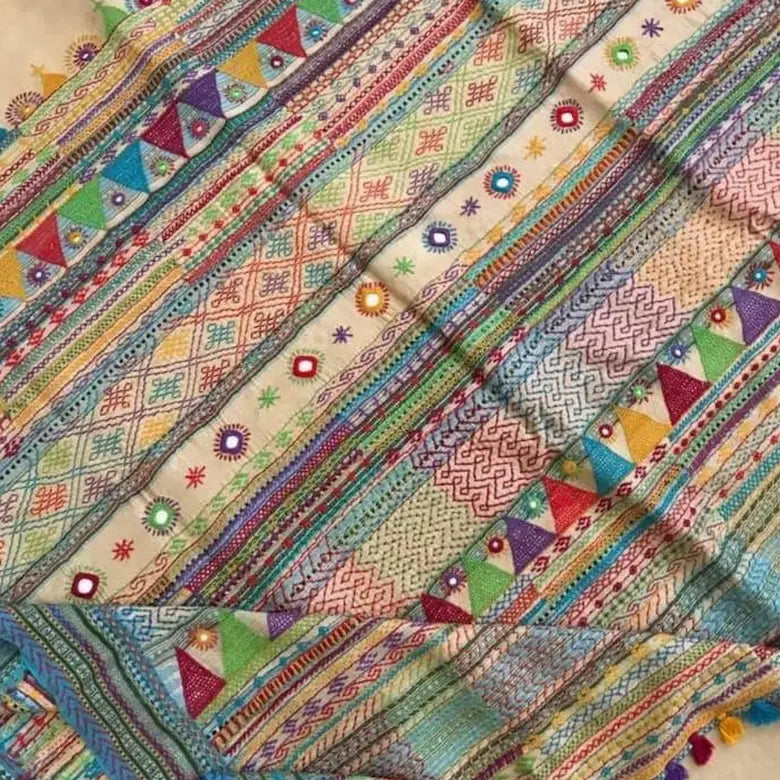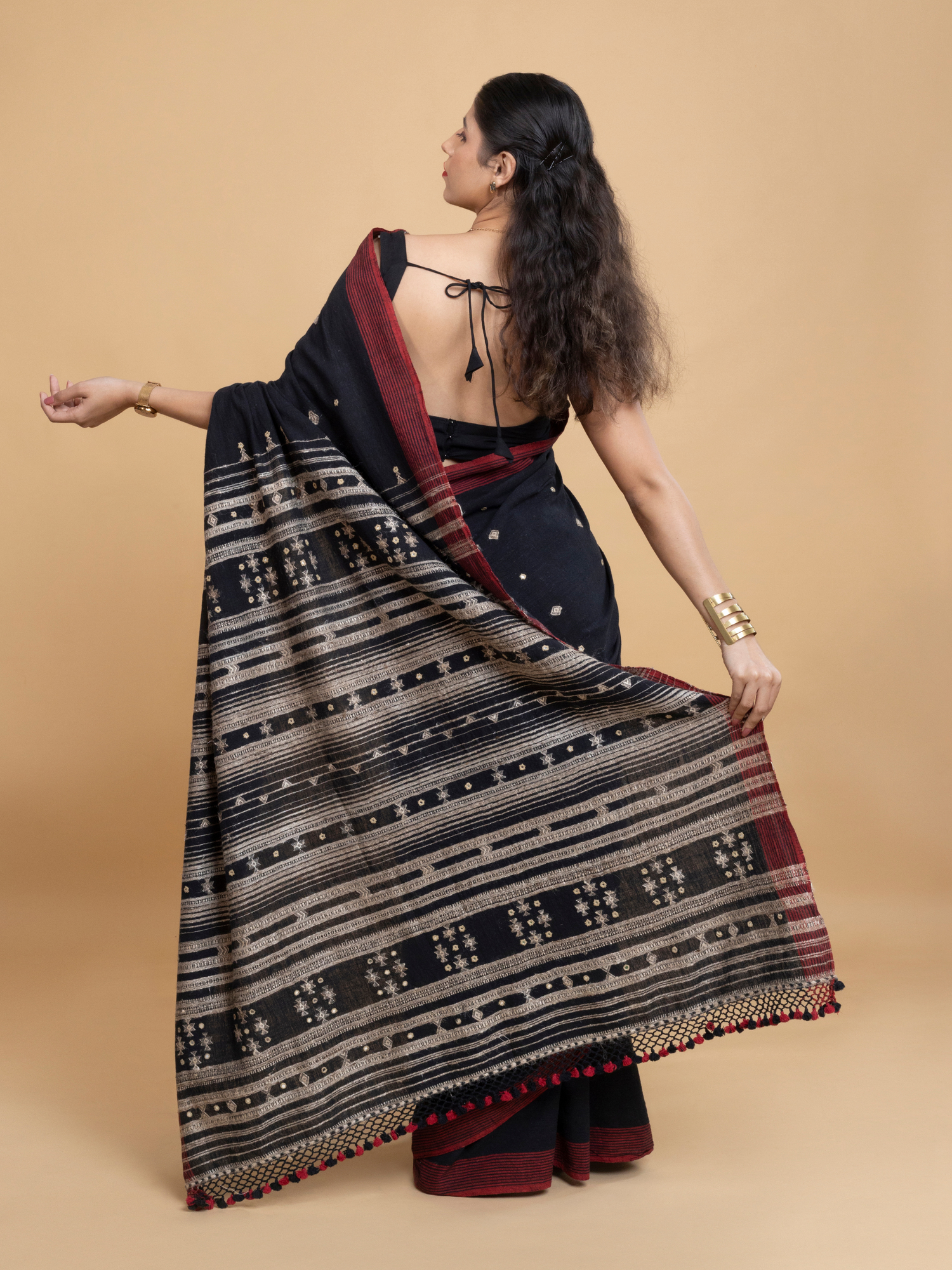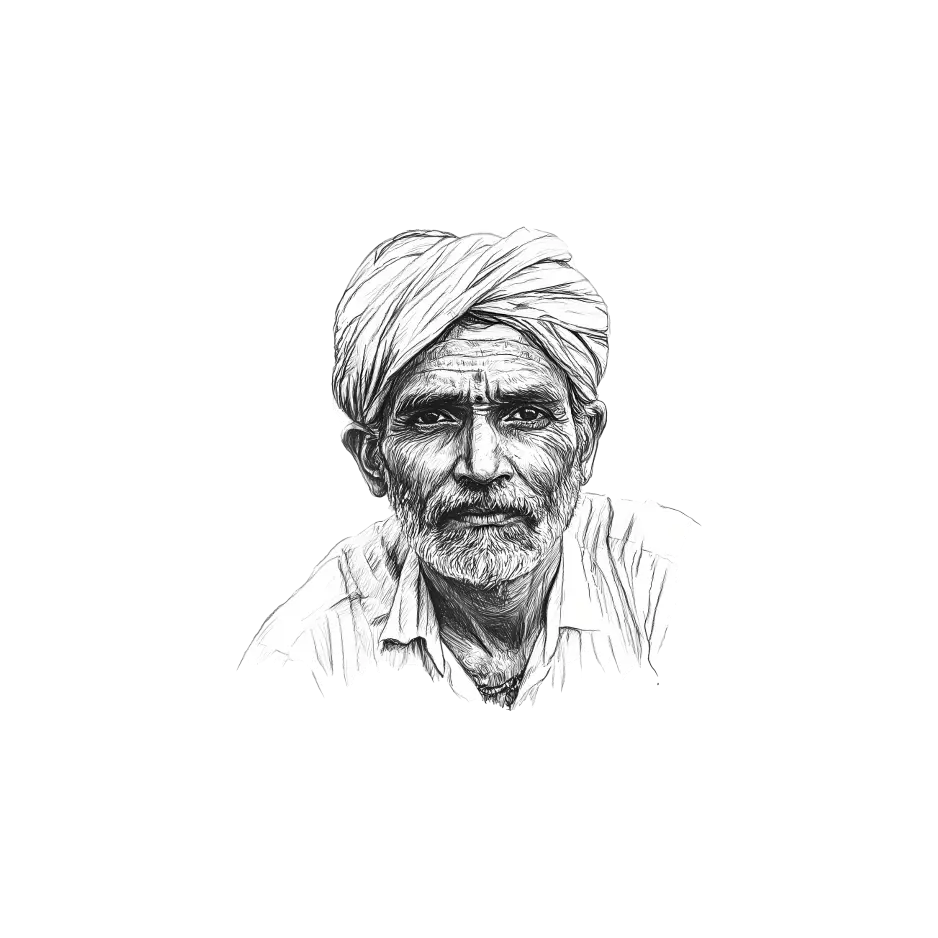
Kutch Sarees: The Rustic Elegance of Bhujodi

A Heritage Woven in Earthy Threads
Kutch sarees, particularly those from Bhujodi, embody the spirit of Gujarat’s handloom tradition—subtle yet rich, timeless yet contemporary. Woven in the arid region of Kutch, these sarees are crafted from Kala Cotton, an indigenous cotton variety that thrives solely on rainwater, making it one of the most sustainable and eco-friendly textiles in India. Historically worn by pastoral communities, these sarees have evolved into symbols of artisanal heritage, celebrated for their handwoven textures, muted tones, and delicate mirror work.
Kala Cotton is entirely organic, grown without pesticides or fertilizers, making Bhujodi sarees exceptionally soft, breathable, and durable. The weave is tight and strong, designed to endure time while draping effortlessly over the body.

The Artistry: Subtle Weaves, Geometric Designs, and Mirror Embellishments
Bhujodi sarees are known for their understated beauty, blending traditional motifs with minimalism:
- Geometric Stripes & Borders – Simple, elegant stripes that pay homage to tribal aesthetics.
- Tana Bana (Warp & Weft Play) – A signature interweaving technique that gives depth and dimension to the fabric.
- Tiny Hand-Embroidered Mirrors – Inspired by the desert’s shimmering sun, each mirror is meticulously stitched to reflect light beautifully.
- Earthy, Naturally Dyed Tones – Colors derived from natural dyes, ranging from warm browns and deep indigos to soft beiges.
Bhujodi sarees are woven using a pit loom, allowing for a denser weave that adds texture and movement. The subtle imperfections in the fabric reflect the authenticity of handloom work, ensuring that no two sarees are ever identical.

How to Identify a True Bhujodi Saree
An authentic Bhujodi saree can be distinguished by:
- Tactile Texture: The fabric is coarse yet soft, with an organic, natural feel.
- Handwoven Variations: Slight irregularities in the weave are proof of genuine craftsmanship.
- Muted, Earthy Colors: Unlike synthetic prints, natural dyes give the saree a soft, muted aesthetic.
Hand-Embroidered Mirrors: Powerloom versions lack the delicate charm of real hand-stitched mirror embellishments.

The Beauty of Handloom: A Testament to Artistry
Handwoven sarees are more than fabric; they are an expression of human skill and dedication. Unlike powerloom textiles, which focus on speed and mass production, handloom sarees retain an organic touch—each weave carrying slight variations, a signature of authenticity. The drape, softness, and breathable nature of handwoven fabric make them superior to machine-made alternatives, ensuring comfort and elegance that only improves with time.

Meet the Artist: The Welcoming Weaver of Bhujodi
In the small village of Bhujodi, 45-year-old Dev Ji greets visitors with a warm smile and an open heart, eager to share the secrets of his craft. Weaving since childhood, he learned the art from his ancestors, perfecting the delicate balance of warp and weft. His workshop is a humble space filled with wooden looms, heaps of hand-spun cotton, and the rhythmic sound of weaving—a sound that echoes the soul of Kutch. He believes that every Bhujodi saree carries a story, a piece of the desert, and the love of its maker.
